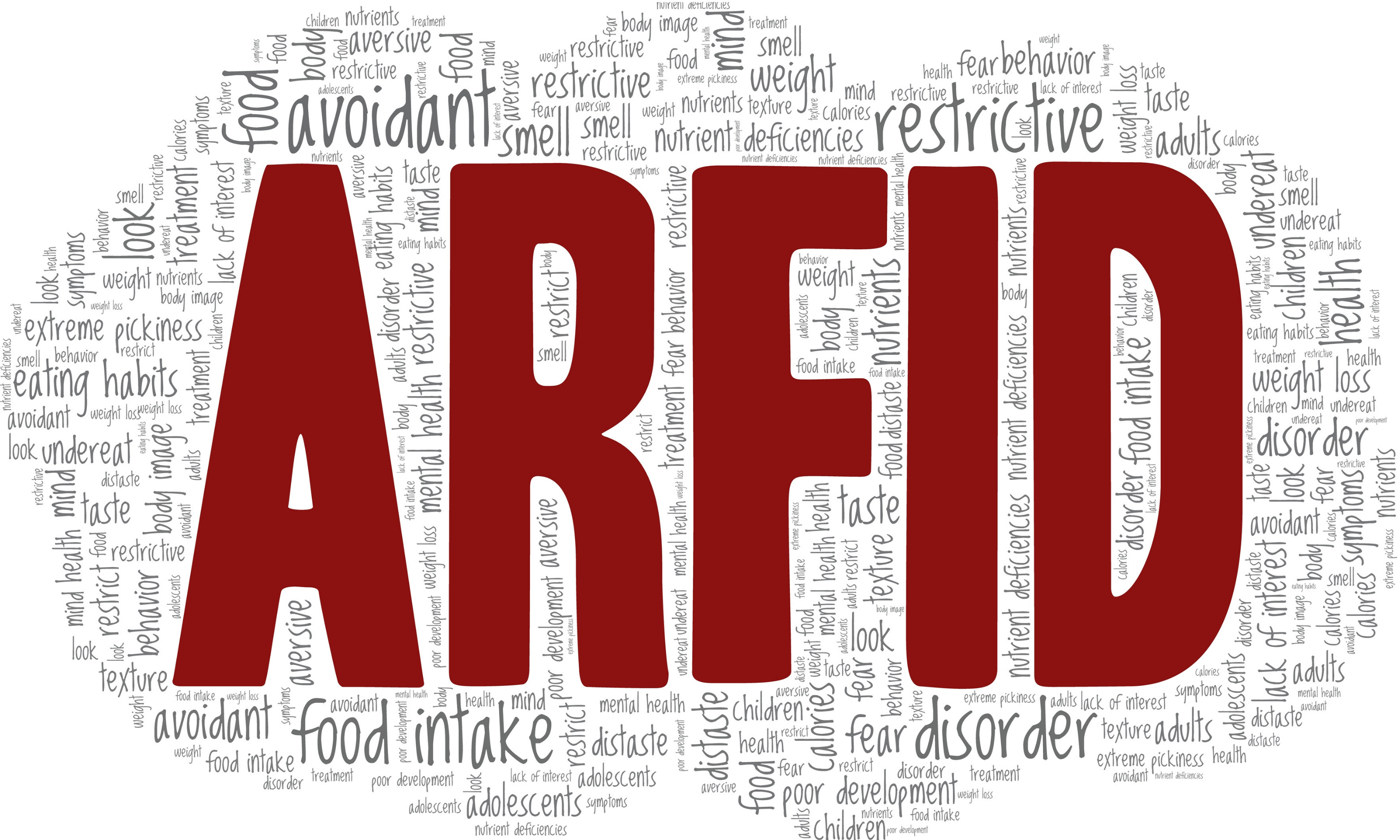Last Updated:
July 21st, 2025
ARFID | Symptoms, Causes and Treatment Options
We all know someone who’s a picky eater. Maybe they steer clear of certain textures or stick to the same handful of meals. Most of the time, it seems like a harmless thing we joke about or simply accept. But sometimes, that avoidance becomes a lot more than just a preference: it starts interfering with every aspect of the person’s life.

What is ARFID?
ARFID (Avoidant/Restrictive Food Intake Disorder) is a type of eating disorder where certain foods, or even entire eating situations, are avoided. This might be because of how the food tastes, smells or feels or because eating triggers fear or discomfort. Some people worry that something bad will happen, like choking or being physically sick. Others feel a strong physical reaction to certain textures.
What makes ARFID different from other eating disorders is that it has nothing to do with body image or a desire to lose weight. The person isn’t trying to change how they look. They’re trying to feel safe.
But over time, these patterns can lead to:
- Poor nutrition
- Low energy
- Delayed development in children
- Growing difficulty with social life
- Self-confidence issues
What may cause ARFID?
There’s no clear-cut reason why someone develops ARFID, and researchers are still working to understand the condition fully. That said, a number of patterns and potential explanations have been identified by professionals in the field. These aren’t confirmed causes, but they help us understand why ARFID might develop and why it can manifest differently in each person.
Here are some of the current theories:
What’s clear is that ARFID is not a choice. It’s something that develops quietly and gradually, and it’s often hard to explain until it starts affecting daily life.
How can I spot ARFID in my child?
The line between fussy eating and ARFID can be blurry, especially if your child has always had a selective appetite. But ARFID goes beyond preference. It has the ability to affect growth and many other areas of development, making it crucial to spot the signs early.
Here are some signs that might point to ARFID
- Ongoing refusal to try new foods
- Avoidance of food based on how it feels, smells or looks
- Regular complaints of feeling full quickly or feeling unwell after eating
- Anxiety or distress at the thought of mealtimes
- Falling behind on weight or growth expectations
If a child’s eating habits are causing concern or making everyday life feel harder, it may be time to speak to someone who understands ARFID.
Does ARFID affect adults?
ARFID in adults often flies under the radar. People tend to develop coping strategies to avoid drawing attention to their eating, but beneath the surface, the condition can have a real impact on overall quality of life.
If you’re worried about a loved one or perhaps even yourself, here’s what to look out for:
- A long-standing pattern of restricted eating that doesn’t involve weight loss goals
- Discomfort or anxiety around unfamiliar food situations
- Ongoing health problems linked to poor nutrition
- Social withdrawal that seems tied to eating environments
If you’re worried about an adult loved one, the approach is similar to helping a child: reach out to professionals who understand ARFID and can guide the next steps.

How is ARFID treated?
ARFID treatment often involves both psychological and nutritional support, working together to help someone feel safer and more capable around food. Here’s a closer look at how:
Nutritional support
One of the main goals in treating ARFID is improving nutritional intake and reintroducing a wider range of foods in a way that feels manageable. This often starts with small changes and builds slowly. Dietitians who specialise in eating disorders play a key role, especially when helping children and families find balanced, structured eating routines.
In more severe cases, nutritional deficiencies may need urgent attention. This could involve short-term use of supplements or even hospital care where nasogastric feeding might be necessary.
As the person’s intake improves, foods they used to enjoy can be brought back in, helping them get closer to a more typical and flexible diet.
Psychological support
Alongside nutritional care, therapy helps address the mental and emotional patterns that sit behind food avoidance. Depending on the person’s needs, treatment might involve individual cognitive behavioural therapy, exposure therapy or family-based approaches.
Some therapists work closely with parents or caregivers, especially when a child’s anxiety plays a big role in how they eat. Their aim is to shift the emotional experience of eating so it becomes something that feels possible again.
Together, these approaches support long-term progress, one step at a time.
Does ARFID ever need inpatient care?
Sometimes it does. If someone’s physical health is at serious risk or if the condition has reached a point where daily life feels unmanageable, inpatient treatment can offer a more stable environment to begin recovery.
In this setting, the person is surrounded by professionals who understand what they’re going through. They’re given structure and space to focus entirely on healing without the daily triggers or routines that may have made things worse at home. It’s not a quick fix, but it can provide the foundation someone needs to start building new patterns and confidence.
How Addiction Helper can support recovery from ARFID
ARFID isn’t always easy to recognise, and for many people, it takes years before they realise they’re not alone. At Addiction Helper, we’re here to make that next step easier. Whether you’re looking for therapy, inpatient care or nutritional advice, we can help you find support that suits your needs.
There’s no perfect time to reach out; just the moment you decide you don’t want to stay stuck. Recovery is possible, and we’re here when you’re ready.
Our compassionate team are ready and available to take your call, and guide you towards lasting the lasting addiction recovery you deserve.
Frequently Asked Questions
(Click here to see works cited)
- Ramirez Z, Gunturu S. Avoidant Restrictive Food Intake Disorder. [Updated 2024 May 1]. In: StatPearls [Internet]. Treasure Island (FL): StatPearls Publishing; 2025 Jan-. Available from: https://www.ncbi.nlm.nih.gov/books/NBK603710/

